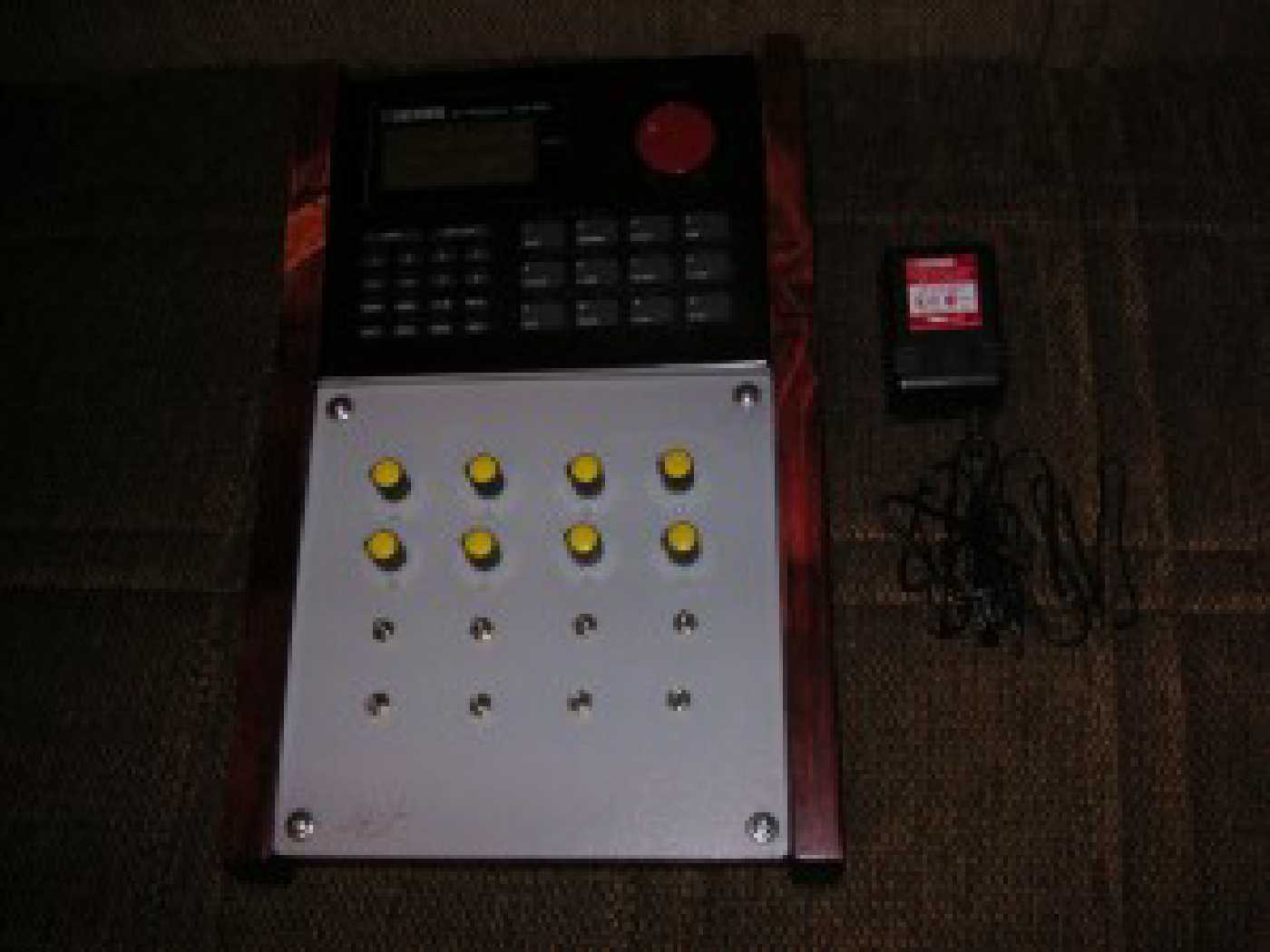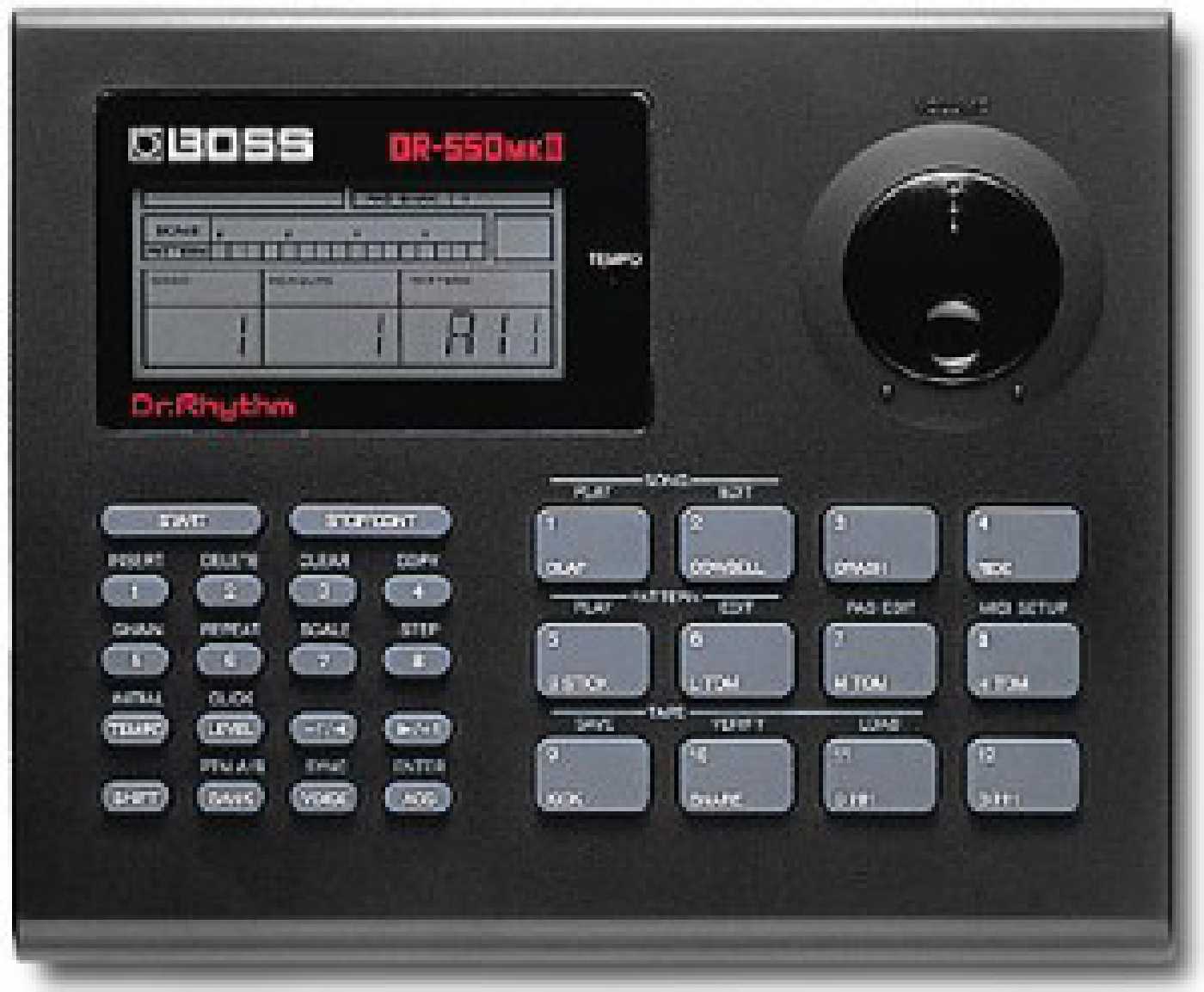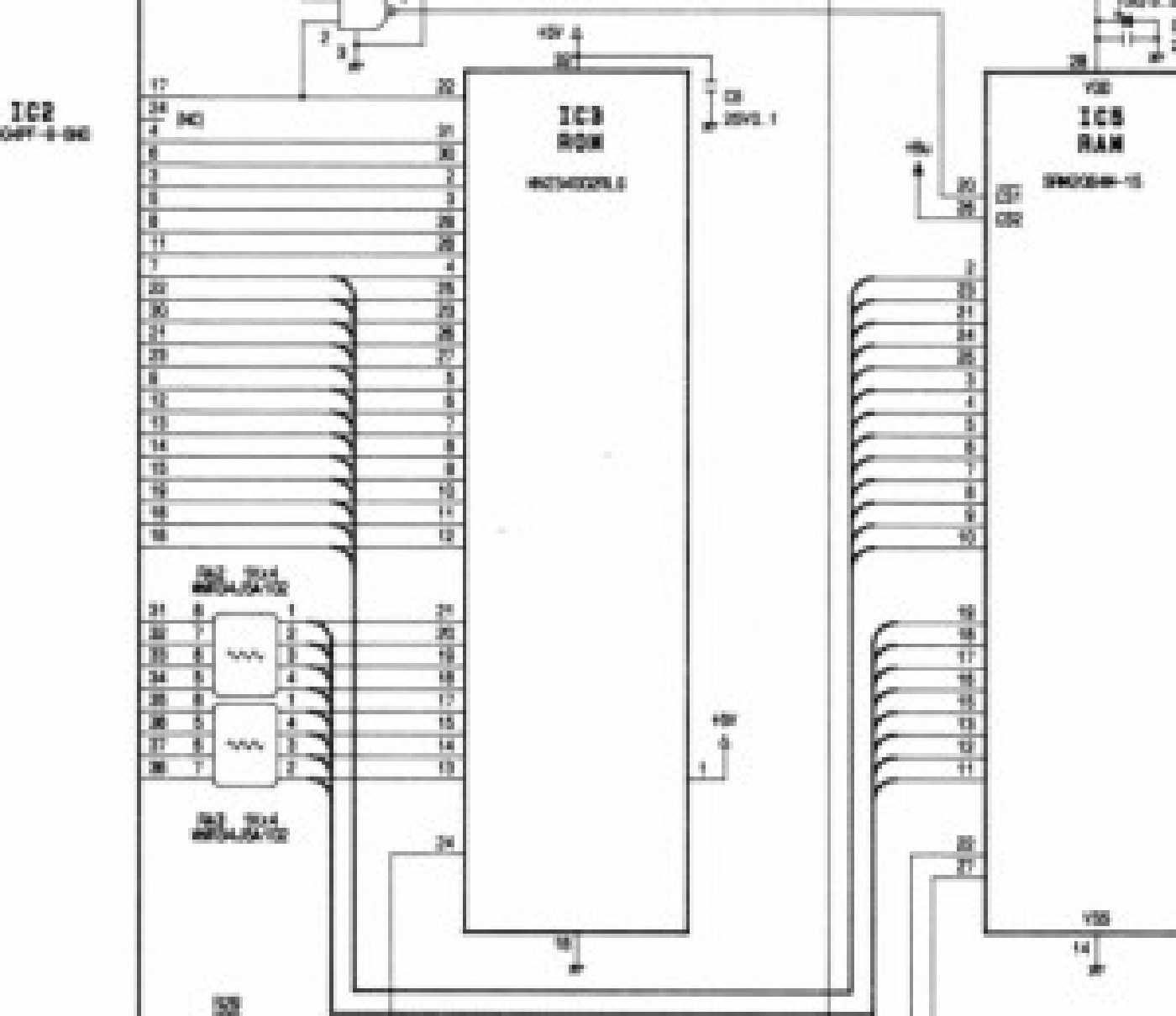LD-550 (Aka Circuit Bent DR-550)

There are lots of how-to documents on circuit bending, so I’m not going to do a post on that. If you are interested in learning how to bend your DR-550, you can follow the links I’ve provided for you at the bottom of this post.
The reason for this post is more to share my experiences in modifying and using this drum machine. But first, read this next bit.
NOTE: Always protect your gear! Put a compressor or limiter somewhere along the signal chain so you don’t blow your speakers. Also, turn down the volume when using any circuit-bent toy, at least at first until you know how loud the machine gets. Use caution.
This is my latest bending project all finished. It started out as one of these:

I have to say though mine was kinda beat up cosmetically when I first got it. Anyway, I modified this drum machine by taking 24 point bends from the ROM chip at various places, excluding 1, and 32 since those carry voltage, and 16 since it’s ground. Shorting the circuit at those points is, at worst case scenario, likely to cause damage to the circuit. This logic holds true for any circuit bending project you undertake. There is plenty of information out there, so it’s always nice to research before you start modifying. You can usually find which these points are by checking the service manual for whatever device you intend to modify. Here is what the 550 looks like:

The points are then attached to 6 position rotary switches like described on burnkit2600. They basically give me 6x6 or 36 bends per pair. Additionally, I’ve added a switch which allows me to turn that pair on or off.
I’ve also taken it a bit further by adding a second row of center-off switches to create what http://www.circuitbenders.co.uk call a bend bus. I’ve connected the bottom switches to the center positions of the corresponding switches so they can be engaged to either the top or bottom bus. This gives me another 6x6x6x6 possibilities for each of the two buses. Needless to say, options are quite large.
I’ve used this same method on some of my other drum machines; however, the 550 doesn’t quite like to play nice. I’ve found that if I use the internal sequencer, most of the bends just do mean things to the patterns, sound, and sometimes its OS causing it to stop making any noise altogether. This doesn’t stop me, though, because this unit has MIDI and can be triggered from a DAW. As long as I’m triggering from an external sequencer, it’s a little more manageable. However, it is still VERY noisy.
Here are some examples:
- This is what happens with the internal sequencer:
- Here is what it does when triggered from an external source:
- Here is something even more impressive. See what happens when I pass this through a modulated filter plugin.
Bottom line here is, as long as I take the time to pre-setup my bends and assign them to my switches, I can get some interesting things with this little noisy thing. Truth is I probably won’t be using this in a live environment very much, but in the studio, it will be a great tool to have around.
Now for something fun…. Here is a track I did using this drum machine and some effects. I also added some pads and a bass line. All the percussion except for the kick was done with the 550.
References:
- [Service Manual](Link to service manual)
- Some Good Bending Sites:
- Other people’s 550: